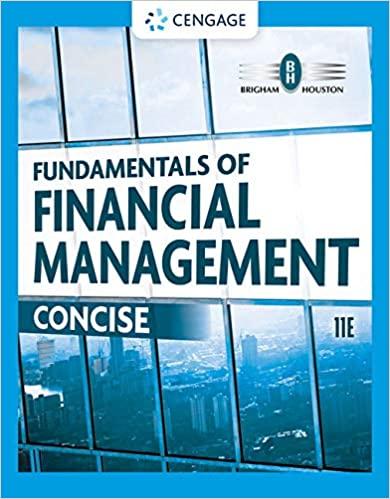Question
Question 1: Term Structure and Default Risk. It is currently time 0 and you observe the following coupon bond prices in a newspaper. Each of
Question 1: Term Structure and Default Risk. It is currently time 0 and you observe
the following coupon bond prices in a newspaper. Each of the coupon bonds have a $100
face value, have annual coupon payments, and have no default risk.
A one year 5% coupon bond costs P1 =$100.80
A two year 6% coupon bond costs P2 =$101.16
A three year 6% coupon bond costs P3 =$98.08
(a) Based on these coupon bond prices, work out the prices of a one year zero-coupon
bond, B1; a two year zero-coupon bond, B2; and a three year zero-coupon bond, B3
(each with $100 face value and no default risk).
(b) Work out the yield to maturity on each of the zero-coupon bonds, y1; y2; and y3.
(c) A firm has a project with the following riskless cash flows: A cash outflow of $1,000,000
at time 1 and a cash inflow of $1,350,000 at time 3.
(c,1) Is this a desirable project? (Work out its value as of today, t = 0.)
(c,2) The firm realizes that interest rates may change over the next year and would like
to "lock in" an interest rate today. In order to do so, the firm will buy one-year zero
coupon bonds and finance the purchase of these bonds by selling three-year zero coupon
bonds. How many one-year zero coupon bonds (of $100 face value) would the firm need
to buy at time 0?
How many three-year zero coupon bonds (of $100 face value) will the firm need to sell in order to finance the purchase of one-year zero coupon bonds?
(Hint: The net cash flows at date 0 from buying and selling the bonds should be zero.)
(d) Another firm has a project which requires a $100,000 investment at time 0. The cash
flows from this project at time 1 would be $140,000 with probability 90 percent (the
"good outcome") and $90,000 with probability 10 percent (the "bad outcome").
The firm decides to fund the project by issuing corporate 1-year zero coupon bonds at
time 0. Suppose bond investors require an expected return equal to the 1-year yield
on riskless bonds (the y1 you calculated above).
(d,1) What expected cash flow will bond investors require at t=1 in order to provide $100,000
in bond financing at time 0?
(d,2) Since bond investors will only get paid $90,000 in the bad outcome, how much will the
firm need to pay them in the good outcome given your calculations in (d,1)?
(d,3) What will the bond yield be on the corporate bonds issued at t=0?
Step by Step Solution
There are 3 Steps involved in it
Step: 1

Get Instant Access to Expert-Tailored Solutions
See step-by-step solutions with expert insights and AI powered tools for academic success
Step: 2

Step: 3

Ace Your Homework with AI
Get the answers you need in no time with our AI-driven, step-by-step assistance
Get Started


